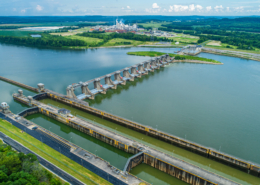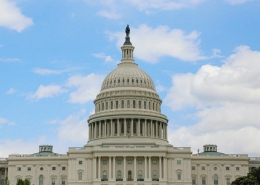For centuries, maps have served as our guides, etching paths across continents and igniting the spirit of exploration. Today, they give us a sense of freedom and flexibility in our daily lives. We stand at the precipice of an opportunity – the transformation of digital maps from navigation tools to a dynamic foundation for managing the physical infrastructure that underpins our lives.
My own journey in the world of digital mapping mirrors this evolution. I recall the early days at NAVTEQ, one of the first digital mapping companies now known as HERE Technologies, where intricate road details were painstakingly transferred from paper plots to digital frameworks. It was a world where in-car navigation was a luxury reserved for high-end vehicles. Little did we know, these early efforts would pave the way for portable devices like Garmins and ultimately, maps nestled comfortably in our pockets.
The rise of connectivity, smartphones, and data packaging through APIs (Application Programming Interfaces) empowered a new wave of innovation. However, this digital revolution wasn’t solely driven by technological advancements. Google, seizing this opportunity, democratized access to maps, prioritizing user-friendliness and accessibility.
Now, as we stand at the cusp of the next chapter, the ingredients for building an even more robust digital infrastructure are at our fingertips. However, the challenge lies not in the technology itself, but in harnessing its potential to foster a new ecosystem. Here’s what this entails:
- A Map Deconstructed: Imagine a deconstructed dish, where ingredients are separated and presented, allowing diners to assemble it according to their preferences. This allows them to highlight specific flavors and textures. Similarly, we can deconstruct the concept of a map. Today’s digital maps prioritize guiding travelers to their destinations. The next generation, however, will connect a broader ecosystem – infrastructure owners, mobility providers, vehicles and assets, and travelers themselves. This map will transform into a dynamic platform for managing physical infrastructure and adapting to real-time changes. It will enable proactive measures, facilitate investment decisions, and foster information sharing across organizational and geographic boundaries, bridging the gap between the physical and digital worlds.
- Simplicity: Widespread adoption hinges on user experience. The map deconstructed into a digital infrastructure platform needs to be intuitive and user-friendly, encouraging participation from a diverse range of stakeholders. Many tools exist today but they often require deep expertise, are complex and are built as point solutions that create siloes and barriers to widespread use. With the proliferation of AI, another level of simplification is not only possible but incumbent upon us so that the workforce and users can take advantage of the vast data availability.
- Sustainable Business Models: To ensure long-term viability, the ecosystem must be built upon self-sustaining, flexible business models that can adapt and scale with changing needs. The key to building momentum is pinpointing a clear and compelling need and in turn, a customer’s willingness to pay for the solution. Navigation gave users freedom to move through the world with confidence. The associated business models evolved from hardware-based to paid services and then to ad-supported applications. Today, uncovering this compelling experience for a large enough audience is necessary to move beyond government funded pilots. A combination of open-source platforms and the ability for ecosystem players to build sustainable revenue streams are necessary to scale and support growth.
The potential applications of this digital infrastructure are vast. Predictive maintenance, efficient resource allocation, and real-time response coordination – these are just a glimpse into the transformative power of maps reimagined.
This shift necessitates a paradigm change. Maps are no longer just about navigation; they are deconstructed to become the cornerstone for building smart and sustainable cities. The journey from papyrus scrolls to pixelated landscapes has been remarkable. The next chapter, where maps become the architects of a digitally-managed infrastructure, promises to be even more transformative. Let us collectively rewrite the map, not just of our physical world, but of the future we wish to build.













